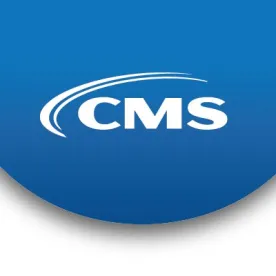On December 3, 2020, Centers for Medicare & Medicaid Services (“CMS”) announced key details concerning a new value-based reimbursement and patient care model – the Geographic Direct Contracting Model (the “Model” or “Geo”). Geo is a geographic-based approach to value-based Medicare reimbursement and patient care that focuses on improving health outcomes and decreasing the cost of care across an entire geographic region. Direct contracting entities (“DCEs”) participating in the Model will be taking responsibility for the total cost of care of Medicare fee-for-service beneficiaries in their region. Accountable care organizations (ACOs), health systems, health care provider groups, health plans, and other potential applicants will be permitted to participate in the Model as DCEs. The Model intends to encourage care coordination across a physical, geographic area and to deliver care that considers a region’s particular local needs.[1]
Background
As we discussed in our November 27, 2019 blog post, CMS created five payment models under two paths, the Primary Care First Model and the Direct Contracting Model, as part of its Primary Cares Initiative, which seeks to transform Medicare reimbursement from a fee-for-service system to a value-based system. The Implementation Period of two of the Direct Contracting Model options, the Global Option and the Professional Option, runs from October 1, 2020 through March 31, 2021. Geo, which is the third Direct Contracting Model, was not included in CMS’ original release of the Request for Application and Letter of Intent to participate in the Direct Contracting Model back in November 2019. Unlike the Global and Professional Options, Geo requires DCEs to take on financial risk for a portion of all Medicare fee-for-service beneficiaries within a certain geographic area rather than financial risk for Medicare beneficiaries seeing certain providers.[2]
Compensation of DCEs Under the Model
The Model’s financial methodology is primarily based on the DCE’s performance against a region’s Performance Year Benchmark. As part of the application process, each DCE will bid a discount against a certain Performance Year Benchmark for the region calculated by CMS. The DCE will be responsible for 100% of savings or losses above or below this discount, subject to risk corridors and risk adjustment and quality adjustment mechanisms, as described below.[3]
Risk Adjustment
Under the Model, there will be a risk adjustment mechanism to account for the underlying health status of the population of beneficiaries aligned to a DCE. While the mechanism will utilize the Hierarchal Chronic Conditions (HCC) risk adjustment methodology, risk scores will be normalized and subject to a zero-sum coding intensity factor to ensure that there are no increases in payments triggered solely by coding intensity increases. As a consequence, within each region, the average DCE risk scores will equal the 1.0 average used to the applicable Performance Year Benchmark.
Quality Withholds
To facilitate quality of care, CMS will withhold a certain percentage of the DCE’s Performance Year Benchmark. The quality withhold will begin at 1% in Performance Year 2022, increase to 2% in Performance Year 2023, and increase to 3% in Performance Year 2024 and beyond. DCEs may earn back their quality withholds based on their quality scores, which takes into account the DCE’s quality performance relative to a national benchmark and an Improvement Factor that assesses whether a DCE demonstrates statistically significant improvement annually that exceeds most of its peers. The Model will also include a High Performers Pool that distributes any quality withholds not earned back by a DCE to other DCEs who have exceptional quality performance.[4]
Risk Corridors
Aggregate savings and losses will be further constrained by a series of risk corridors. DCEs will receive a portion of shared savings or be liable for a portion of shared losses above each risk band, with the portion of gross savings/losses decreasing with each risk band. Risk corridors will be applied to a given DCE’s savings minus its bid discount and after adding a standard 5% percentage point administrative load. Within the reconciliation process, CMS will cover risk corridor related shared losses only to the extent that it receives risk corridor payments from the DCEs.[5]
Capitation
DCEs will be able to opt in to either total or partial capitation. For total capitation, DCEs and Medicare-enrolled providers or suppliers who have voluntarily chosen to enter into an agreement with a DCE (“Geo Preferred Providers”) will opt to reduce the Geo Preferred Providers’ fee-for-service billing paid by MACs by 100%. The DCEs will receive a monthly capitated payment equal to the projected reduction in fee-for-service billings and will be responsible for all downstream payments to Geo Preferred Providers. Geo Preferred Providers will still be required to submit claims to MACs but those claims will treated as no-pay claims. Partial capitation will work similarly, but Geo Preferred Providers’ fee-for-service billing will be reduced by MACs by between 1% and 50%. The DCEs will receive a monthly capitated payment equal to the projected reduction in fee-for-service payments. DCEs may make additional downstream payments to Geo Preferred Providers as agreed upon between the DCE and the Geo Preferred Providers. CMS is considering whether DCEs could also take capitation for non-Geo Preferred Providers conditioned on the DCE’s ability to demonstrate that it can accurately pay at 100% Medicare fee-for-service rates and follow all Medicare coverage coding and timeliness guidelines. DCEs are expected to submit Geo Preferred Provider lists the CMS Innovation Center by September 1, 2021.[6]
Alignment
While there is no maximum, each DCE will be aligned a minimum of 30,000 beneficiaries. To determine a DCE’s number of aligned beneficiaries, CMS will calculate an Enrollment Allocation, which will be equal to the DCE’s average discount across the three relevant performance years divided by the sum of all DCEs’ average discounts in the DCE’s region. DCEs with a higher average discount relative to the other DCEs in their region will receive a higher number of aligned beneficiaries for that performance period. The Enrollment Allocation will be equal to a percentage of the total beneficiaries in the region, less those beneficiaries that have voluntarily aligned at the time of alignment.
Beneficiaries will be aligned to a DCE in the following priority order:
-
Voluntary Alignment. First priority will be given to DCE alignment based on a beneficiary’s voluntary alignment to a specific Geo DCE.
-
MCO-Based Alignment for Dually Eligible Beneficiaries. If a DCE or its affiliate operates a Medicaid Managed Care Organization (“MCO”), all of the full-benefit dually eligible beneficiaries who are in Medicare fee-for-service and enrolled in the MCO for their Medicaid benefits will be aligned to that DCE, with the exception of a beneficiary who has voluntarily aligned to a different DCE.
-
ACO-Based Alignment. A DCE may enter into an arrangement with an ACO participating in the Medicare Shared Savings or Next Generation ACO Program. The beneficiaries aligned to the ACO who reside in the DCE’s region may be aligned to the DCE. The number of ACO aligned beneficiaries for a given DCE will be capped at 50% of a DCE’s Enrollment Allocation.
-
Claims-Based Alignment. Beneficiaries who are not otherwise aligned may be aligned based on primary care services received from a DCE’s Geo Preferred Providers, as evidenced in claims utilization data and based on a care link algorithm, which will identify and link beneficiaries that have active care relationships. The combined number of ACO-based and claims-based aligned beneficiaries for a given DCE will be capped at 50% of a DCE’s Enrollment Allocation.
-
Random Alignment. Any beneficiaries who are not otherwise aligned will be aligned randomly to a DCE.
Alignment is not permanent, and beneficiaries will have the option to select a DCE in their region at the start of each performance period and to change DCEs either quarterly or annually.[7]
Beneficiary Engagement Incentives
DCEs will be able to provide certain items and services related to medical care to beneficiaries to incentivize their engagement in the Model. Examples of engagement incentives that DCEs can offer to beneficiaries are:
-
Vouchers (g., over-the-counter medications, transportation services to and from medical appointments, vision and dental care services, malnutrition to access meal programs, chronic disease self-management, and pain management and falls prevention programs).
-
Items and services to support management of a chronic disease or condition (g., home air-filtering systems or bedroom air-conditioning for asthmatic patients or a blood pressure monitor for patients with high blood pressure).
-
Decision support tools to support informed decision-making and beneficiary education.
-
Electronic systems that alert family caregivers when a family member with dementia wanders away from home or gets up from a chair or bed.[8]
Program Integrity
DCEs have a variety of options for assessing program integrity and validating medical necessity. For Geo Preferred Providers, DCEs may implement a range of program integrity tools including prior authorization, concurrent or pre-claim review, pre-payment claim edits, and pre-payment and post-payment medical and payment review. Any such program integrity tool must be referenced in the agreement between the DCE and the Geo Preferred Provider. For Non-Geo Preferred Providers, prior authorization cannot be required but may be offered as an option to avoid other forms of pre-payment or post-payment review.[9]
Timing for Participation in the Model
Organizations that might be interested in participating in the Model should submit a non-binding Letter of Interest (“LOI”) to CMS by 11:59 pm PT, December 21, 2020. The Request for Applications for the Model will be made available in January 2021, and the applications will be due on April 2, 2021. CMS will select participants for the Model by June 30, 2021. The first three-year performance period will run from January 1, 2022 through December 31, 2024. A second three-year performance period will run from January 1, 2025 through December 31, 2027.[10]
Geographic Regions
The LOI includes a list of fifteen geographic regions and provides the opportunity for organizations submitting an LOI to rank the regions in which they would be most interested in participating. CMS will use the LOIs received in order to determine the final regions that will be included in the Model. The regions that CMS is considering are Atlanta, Dallas, Denver, Detroit, Houston, Los Angeles, Miami, Minneapolis, Orlando, Phoenix, Philadelphia, Pittsburgh, Riverside, San Diego, and Tampa. CMS expects to solicit participants in four to ten regions for the first performance period.[11]
Selection of DCEs
DCEs will be selected using a two-step application process. First, applicants will be assessed for their ability to meet Model requirements based on a rubric of nine domains: (1) organizational structure and experience; (2) leadership and management; (3) financial plan and risk-sharing experience; (4) patient-centeredness and beneficiary engagement; (5) quality and clinical process improvement; (6) network management; (7) care management; (8) compliance; and (9) IT systems. Only applicants who meet a pre-determined scoring threshold for this rubric will move on to the second step of the selection process.[12]
Second, regions and participants will be selected based on the discount (expressed as a percentage of the region’s Performance Year Benchmark) for each of the three years of the relevant performance period that they propose in their application. In the Request for Applications, CMS will indicate the minimum and maximum number of DCEs per region, which CMS expects to be between three and seven depending on the number of Medicare fee-for-service beneficiaries in a region. Applicants must have proposed discounts above a regional minimum (expected to be between 2-3%) that are actuarially sound (expected to be a maximum discount of between 8-9%) to be eligible for selection for the Model. From among the applicants whose proposed discounts meet the required criteria, CMS will select applicants with the highest average discount. Average discounts will be calculated by summing the discount for each Model Performance Year (PY) multiplied by the Model Performance Year Weight (PY1 40%, PY2 30%, PY3 30%).[13]
The Model’s Impact on Providers: Geo Preferred Providers
Health care providers have the option to become Geo Preferred Providers by entering into value-based arrangements with DCEs that meet the Model’s requirements. To be eligible to be a Geo Preferred Provider, the provider must be a Medicare-enrolled provider or supplier that (i) bills for items and services it furnishes to Medicare fee-for-service beneficiaries; (ii) is not excluded or otherwise prohibited from participation in Medicare or Medicaid; (iii) is identified on the DCE’s list of Geo Preferred Providers; and (iv) has agreed to participate in the Model under a written agreement with a DCE. The agreement between the DCE and Geo Preferred Provider must include: (1) an attestation by the Geo Preferred Provider that it is willing to participate in the Model as a Geo Preferred Provider, including following the applicable requirements of the Model as set forth in the Participation Agreement between CMS and the DCE; and (2) specify the payment terms between the DCE and the Geo Preferred Provider. The agreements may also include additional terms and conditions related to payment and billing rules, care coordination, quality goals, and/or operational functions such as program integrity. Participation in the Model is optional, and providers that do not want to participate will continue to be reimbursed at 100% Medicate fee-for-service rates.[14]
The Model’s Impact on Medicare Beneficiaries
Beneficiaries receiving care in the Model will maintain all of their existing benefits and coverage rights, including ability to continue seeing their chosen providers, and may, at the DCE’s option, receive enhanced benefits such as additional telehealth services and easier access to home care, and access to skilled nursing care without having to stay at a hospital for three days. Beneficiaries’ out-of-pocket costs will not increase under the Model. Participating DCEs will have the ability to reduce beneficiary cost sharing for Medicare Part A and Part B services and offer beneficiaries a Part B premium subsidy, in addition to other special privileges afforded DCEs to further the objectives of the program.[15]
Interested Parties Will Need to Act Quickly
Interested parties will need to act quickly since the LOI is due to CMS by 11:59 pm PT, December 21, 2020. The LOI is non-binding, so anyone who submits an LOI is under no obligation to participate in the Model. While entities who do not to submit an LOI in December will still have the option to apply to participate in the Model, CMS is using the LOIs to help select the target regions for the Model, so failure to submit an LOI could result in CMS not selecting an interested party’s preferred region. All entities interested in participating in the Model, regardless of whether they submitted an LOI, will need to submit an application in response to a subsequent Request for Applications. CMS expects to release this Request for Applications in January 2021.[16]
FOOTNOTES
[1] https://www.healthcaredive.com/news/cmmi-rolls-out-geographic-model-it-calls-among-largest-bets-on-value-based/591578/; https://www.cms.gov/newsroom/fact-sheets/geographic-direct-contracting-model-geo
[2] https://www.cms.gov/newsroom/fact-sheets/geographic-direct-contracting-model-geo
[3] Id.
[4] Id.
[5] Id.
[6] Id.
[7] Id.
[8] Id.
[9] Id.
[11] https://www.cms.gov/newsroom/fact-sheets/geographic-direct-contracting-model-geo
[12] Id.
[13] Id.
[14] Id.
[15] https://www.cms.gov/newsroom/press-releases/cms-announces-new-model-advance-regional-value-based-care-medicare; https://www.cms.gov/newsroom/fact-sheets/geographic-direct-contracting-model-geo
[16] https://cms.gov1.qualtrics.com/jfe/form/SV_0jMH4gLEVBY5LoN




 />i
/>i

